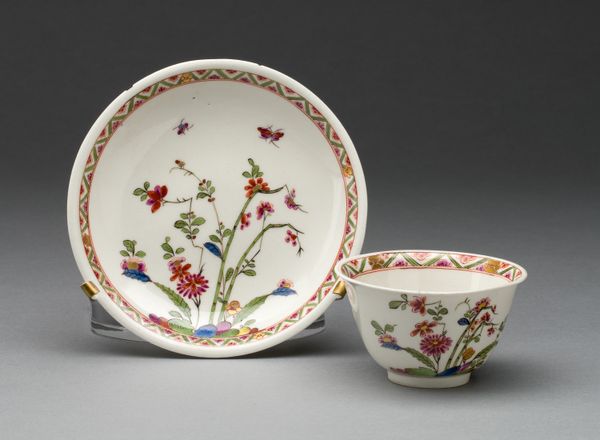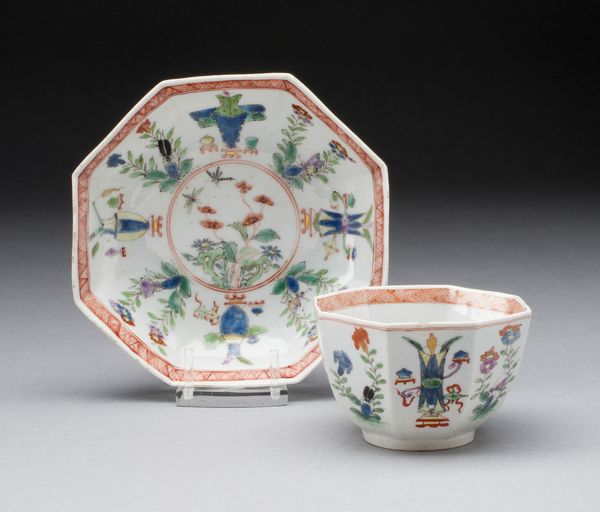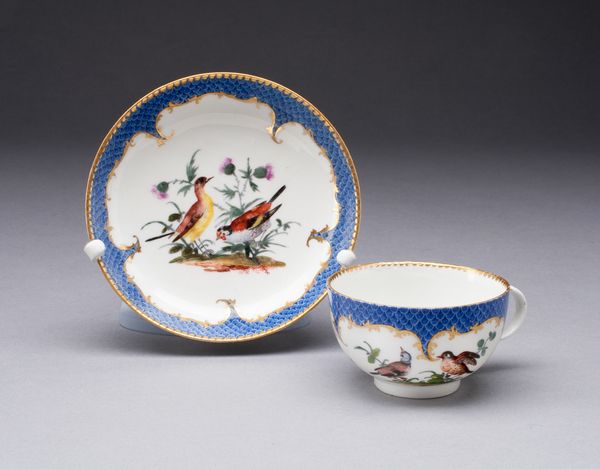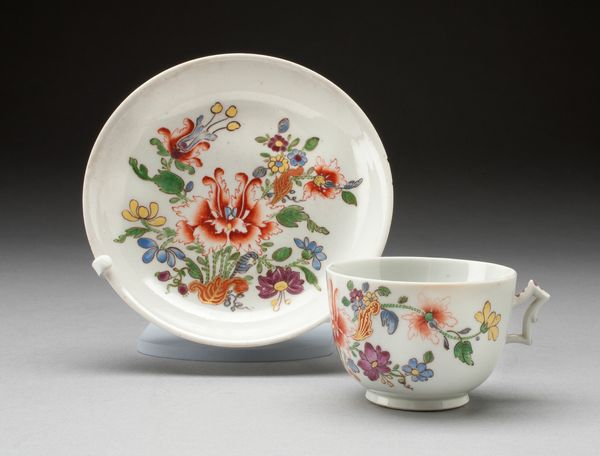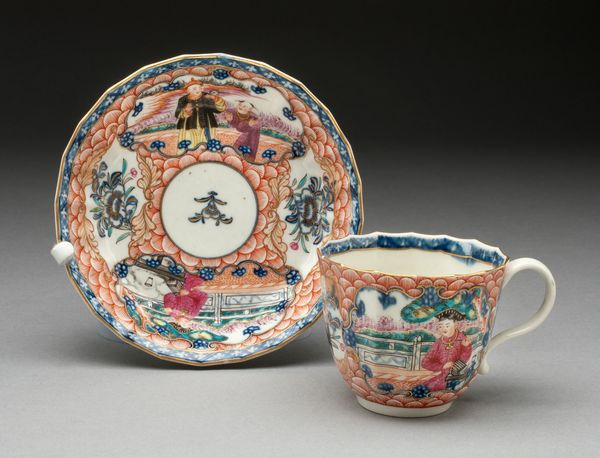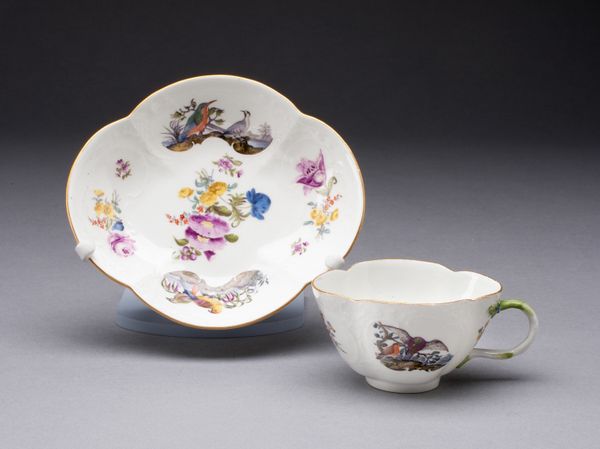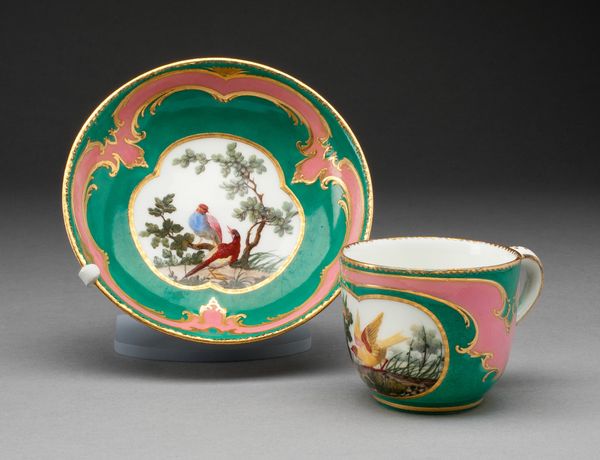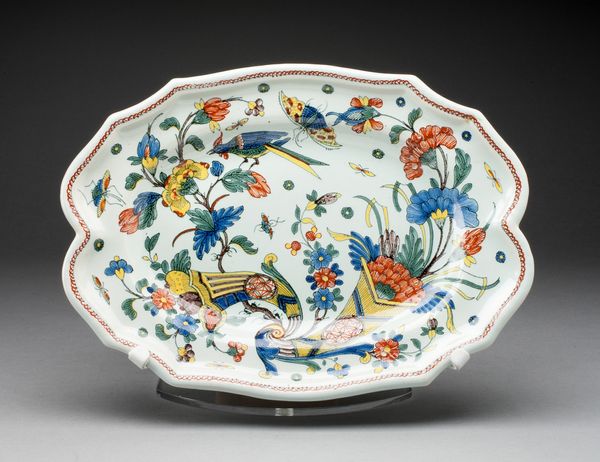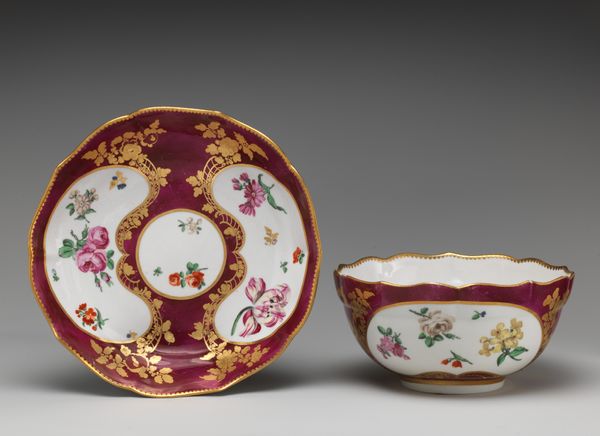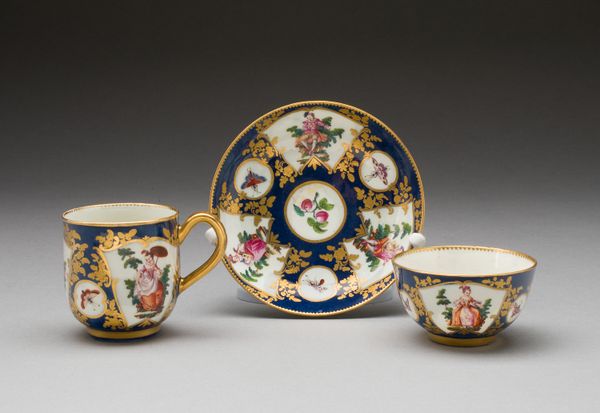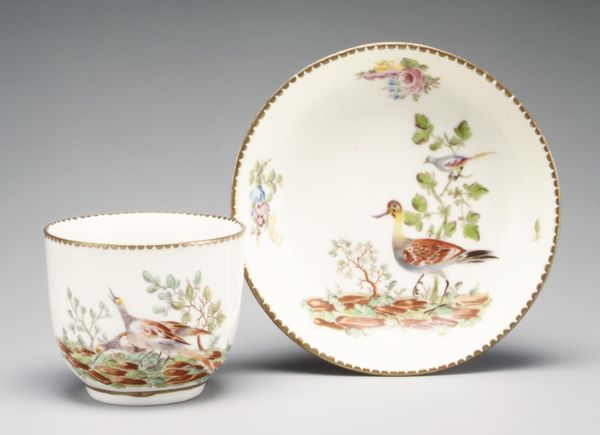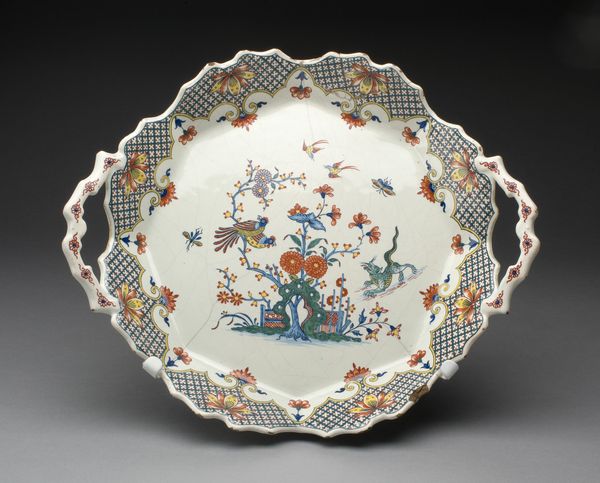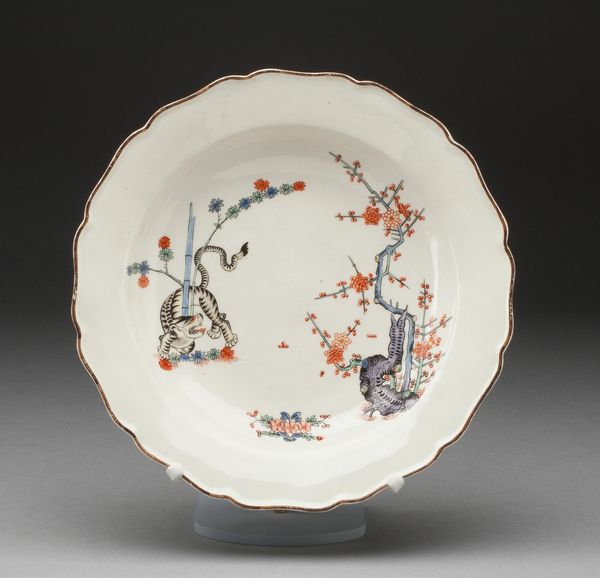
ceramic, porcelain
#
asian-art
#
ceramic
#
bird
#
flower
#
porcelain
#
ceramic
#
decorative-art
#
rococo
Dimensions: Height (teabowl .191): 1 3/4 in. (4.4 cm); Diameter (saucer .192): 5 in. (12.7 cm)
Copyright: Public Domain
This teabowl and saucer were made at the Meissen Manufactory, founded in 1710, from delicate, translucent porcelain, a material then known as "white gold." Porcelain’s creation was painstaking: clay was mined, refined, shaped on a wheel, fired at high temperatures, then meticulously hand-painted with colorful enamels before a final firing. The imagery of birds and flowering branches, inspired by East Asian design, are a testament to the global trade networks of the 18th century. Producing porcelain like this was a complex undertaking, demanding the coordinated labor of miners, potters, painters, and kiln operators. These individuals were often working in harsh conditions for very little pay, while the aristocracy enjoyed the finished product. The high value attributed to porcelain elevated it to the status of treasure, a symbol of wealth and sophistication. Considering the material origins, processes, and the hands involved allows us to appreciate how this seemingly delicate object also embodies a history of industry, labor, and social hierarchy.
Comments
No comments
Be the first to comment and join the conversation on the ultimate creative platform.
